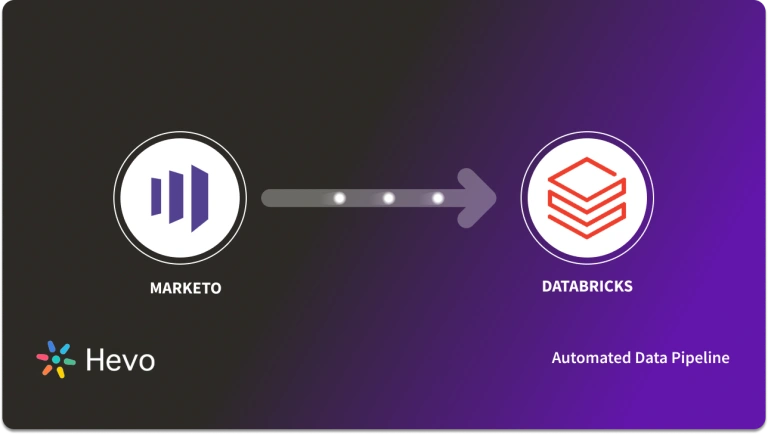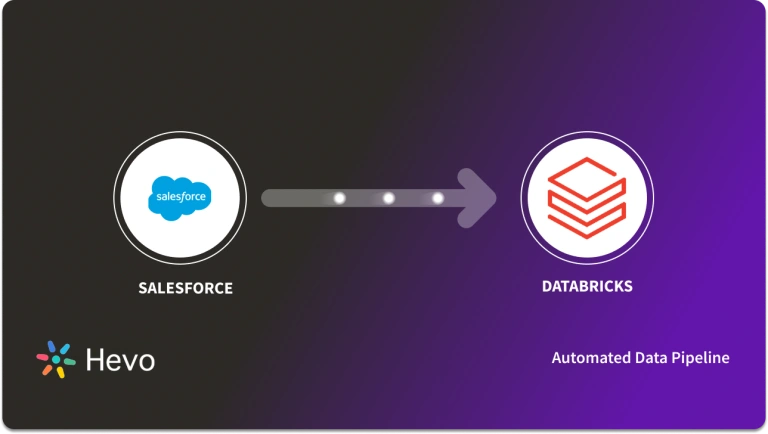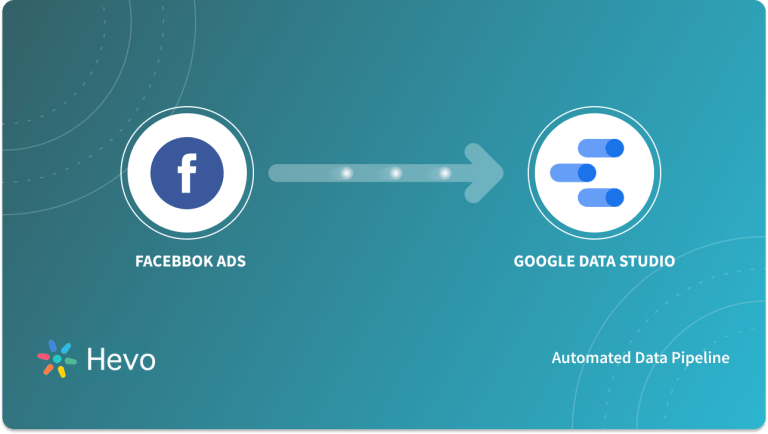Easily move your data from Facebook Ads To Databricks to enhance your analytics capabilities. With Hevo’s intuitive pipeline setup, data flows in real-time—check out our 1-minute demo below to see the seamless integration in action!
It’s challenging to create a completely new data connector when you’re already overburdened with monitoring and maintaining your existing custom data pipelines. You already have so much on your plate, and suddenly you get an ad-hoc Facebook Ads to Databricks connection request from your marketing team. Now, will you compromise your engineering bandwidth with this manual task? We understand you are short on time and require a quick solution. If you just need to select customized reports, download and upload a few CSV files once in a while, then it’s a cakewalk. Alternatively, you might use an automated solution for the same if this task needs to be done on multiple customized reports on a high frequency.
We’ve prepared a simple and straightforward guide to help you replicate data from Facebook to Databricks.
Method 1: Replicate Data from Facebook Ads to Databricks Using CSV Files
This method involves a lot of steps to replicate data and is time-consuming. This method has a higher chance of errors. First, convert the data into CSV files and then import those files into Databricks
Method 2: Replicate Data from Facebook Ads to Databricks Using an Automated ETL Tool
Using Hevo, a no-code tool, you can replicate your data with two steps: configure source and destination. Its highly fault-tolerant architecture ensures data quality and security.
Table of Contents
Method 1: Replicate Data from Facebook Ads to Databricks Using CSV Files
Facebook Ads, being an advertising platform, stores data about customer engagement, site traffic, impressions, the efficiency of ad copies, etc.
Follow along to replicate this data from Facebook Ads to Databricks in CSV format:
Step 1: Export Data from Facebook Ads
Let’s dive into the steps for exporting data from Facebook Ads in CSV format.
- Go to Facebook Ads Manager. Type the name of the campaign in the search bar from which you want to export data.
- Click on the columns button towards the top-right corner of the screen.
- From here, you can break down the data by a range of different choices. By default, the “Performance” option is selected. You can customize the columns according to your needs.
- Now, click on the “Reports” button towards the top-right corner. Then, select the “Export Table Data” option.
- Now, check the “Export as .csv” option. Then, click the “Export” button.

- Now, the CSV file is downloaded into your local system.
Step 2: Import CSV Files into Databricks
- In the Databricks UI, go to the side navigation bar. Click on the “Data” option.
- Now, you need to click on the “Create Table” option.
- Then drag the required CSV files to the drop zone. Otherwise, you can browse the files in your local system and then upload them.
Once the CSV files are uploaded, your file path will look like: /FileStore/tables/<fileName>-<integer>.<fileType>

If you click on the “Create Table with UI” button, then follow along:
- Then select the cluster where you want to preview your table.
- Click on the “Preview Article” button. Then, specify the table attributes such as table name, database name, file type, etc.
- Then, select the “Create Table” button.
- Now, the database schema and sample data will be displayed on the screen.
If you click on the “Create Table in Notebook” button, then follow along:
- A Python notebook is created in the selected cluster.

- You can edit the table attributes and format using the necessary Python code. You can refer to the below image for reference.

- You can also run queries on SQL in the notebook to get a basic understanding of the data frame and its description.

In this case, the name of the table is “emp_csv.” However, in your case, we can keep it as according to your requirements.
- Now, on top of the Pandas data frame, you need to create and save your table in the default database or any other database of your choice.

In the above table, “mytestdb” is a database where we intend to save our table.
- After you save the table, you can click on the “Data” button in the left navigation pane and check whether the table has been saved in the database of your choice.

Step 3: Modify & Access the Data
- The data now gets uploaded to Databricks. You can access the data via the Import & Explore Data section on the landing page.
- To modify the data, select a cluster and click on the “Preview Table” option.
- Then, change the attributes accordingly and select the “Create Table” option.
With the above 3-step approach, you can easily replicate data from Facebook Ads to Databricks using CSV files. This method performs exceptionally well in the following scenarios:
- Low-frequency Data Replication: This method is appropriate when your product and marketing teams need the Facebook Ads data only once in an extended period, i.e., monthly, quarterly, yearly, or just once.
- Dedicated Personnel: If your organization has dedicated people who have to select categories manually, customize templates, then download and upload CSV files, then accomplishing this task is not much of a headache.
- Low Volume Data: It can be a tedious task to repeatedly select different categories, select templates or customize them, and download & upload CSV files. Moreover, merging these CSV files from multiple departments is time-consuming if you are trying to measure the business’s overall performance. Hence, this method is optimal for replicating only a few files.
When the frequency of replicating data from Facebook Ads increases, this process becomes highly monotonous. It adds to your misery when you have to transform the raw data every single time. With the increase in data sources, you would have to spend a significant portion of your engineering bandwidth creating new data connectors. Just imagine — building custom connectors for each source, transforming & processing the data, tracking the data flow individually, and fixing issues. Doesn’t it sound exhausting?
Instead, you should be focussing on more productive tasks. Being relegated to the role of a ‘Big Data Plumber‘ that spends their time mostly repairing and creating the data pipeline might not be the best use of your time.
To start reclaiming your valuable time, you can…
Method 2: Replicate Data from Facebook Ads to Databricks Using an Automated ETL Tool
Going all the way to write custom scripts for every new data connector request is not the most efficient and economical solution. Frequent breakages, pipeline errors, and lack of data flow monitoring make scaling such a system a nightmare. For instance, here’s how Hevo Data, a cloud-based ETL tool, makes Facebook Ads to Databricks data replication ridiculously easy:
Step 1: Configure Facebook Ads as a Source

Step 2: Configure Databricks as a Destination

All Done to Setup Your ETL Pipeline
After implementing the 2 simple steps, Hevo Data will take care of building the pipeline for replicating data from Facebook Ads to Databricks based on the inputs given by you while configuring the source and the destination.
The pipeline will automatically replicate new and updated data from Facebook Ads to Databricks every 1 hr (by default). However, you can also adjust the data replication frequency as per your requirements.
For in-depth knowledge of how a pipeline is built & managed in Hevo Data, you can also visit the official documentation for Facebook Ads as a source and Databricks as a destination.
You don’t need to worry about security and data loss. Hevo’s fault-tolerant architecture will stand as a solution to numerous problems. It will enrich your data and transform it into an analysis-ready form without having to write a single line of code.
By employing Hevo to simplify your data integration needs, you can leverage its salient features:
- Reliability at Scale: With Hevo Data, you get a world-class fault-tolerant architecture that scales with zero data loss and low latency.
- Monitoring and Observability: Monitor pipeline health with intuitive dashboards that reveal every state of the pipeline and data flow. Bring real-time visibility into your ELT with Alerts and Activity Logs.
- Stay in Total Control: When automation isn’t enough, Hevo Data offers flexibility – data ingestion modes, ingestion, and load frequency, JSON parsing, destination workbench, custom schema management, and much more – for you to have total control.
- Auto-Schema Management: Correcting improper schema after the data is loaded into your warehouse is challenging. Hevo Data automatically maps the source schema with the destination warehouse so that you don’t face the pain of schema errors.
- 24×5 Customer Support: With Hevo Data, you get more than just a platform, you get a partner for your pipelines. Discover peace with round-the-clock “Live Chat” within the platform. Moreover, you get 24×5 support even during the 14-day full-feature free trial.
- Transparent Pricing: Say goodbye to complex and hidden pricing models. Hevo Data’s transparent pricing brings complete visibility to your ELT spending. Choose a plan based on your business needs. Stay in control with spend alerts and configurable credit limits for unforeseen spikes in the data flow.
What Can You Achieve by Replicating Your Data from Facebook Ads to Databricks?
Replicating data from Facebook Ads to Databricks can help your data analysts get critical business insights. Does your use case make the list?
- What message would take a customer from one lifecycle stage to another?
- How to identify high ROAS creatives that you should be spending more money on?
- Which creatives and copy work best for your customer segment?
- How to optimize your advertising efforts?
- How do different targeting, creatives, or products impact your customer LTV?
Learn More About:
- Facebook Ads to Snowflake
- Google Ads to Databricks
- Segment to Databricks
- Mixpanel to Databricks
- Mailchimp to Databricks
Summing It Up
Going to Ads Manager, selecting campaigns, selecting columns, downloading and uploading CSV would be the smoothest process when your marketing team requires data from Facebook Ads only once in a while. But what if the marketing team requests data of multiple customized columns with numerous filters in the Facebook Ads data every once in a while? Going through this process over and again can be monotonous and would eat up a major portion of your engineering bandwidth. The situation worsens when these requests are for replicating data from multiple sources.
So, would you carry on with this method of manually selecting and customizing columns every time you get a request from the Marketing team? You can stop spending so much time being a ‘Big Data Plumber’ by using a custom ETL solution instead.
A custom ETL solution becomes necessary for real-time data demands such as monitoring email campaign performance or viewing the sales funnel. You can free your engineering bandwidth from these repetitive & resource-intensive tasks by selecting Hevo Data’s 150+ plug-and-play integrations (including 60+ free sources).
Saving countless hours of manual data cleaning & standardizing, Hevo Data’s pre-load data transformations get it done in minutes via a simple drag n-drop interface or your custom python scripts. No need to go to your data warehouse for post-load transformations. You can run complex SQL transformations from the comfort of Hevo Data’s interface and get your data in the final analysis-ready form.
Want to take Hevo Data for a spin? Explore its 14-day free trial and simplify your data integration process. Check out the pricing details to understand which plan fulfills all your business needs.
Share your experience of connecting Facebook Ads to Databricks! Let us know in the comments section below!
FAQs
1. How do I extract data from Facebook ads?
To extract data from Facebook Ads, use the Facebook Ads Manager to view and download performance reports. You can also utilize the Facebook Marketing API for programmatic access to your ad data.
2. Can you connect Facebook ads to data studio?
Yes, you can connect Facebook Ads to Google Data Studio by using third-party connectors like Supermetrics or the Facebook Ads connector. This integration allows you to visualize and analyze your ad performance data in customizable reports.
3. How to import campaigns in Facebook ads?
To import campaigns in Facebook Ads, navigate to Ads Manager and select the “Import” option to upload your campaign data in a supported format, such as a CSV file. You can also use the “Duplicate” feature to replicate existing campaigns within your account.










